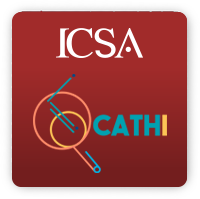Improving Equitability and Inclusion for Testing and Detection of Lead Poisoning in US Children
Child lead poisoning, the longest-standing child public health epidemic in US history, is associated with socioeconomic inequity and perpetuates health inequality. Removing lead from children’s environments (“primary prevention”) is and must remain the definitive solution for ending child lead poiso...
Saved in:
| Hovedforfatter: | |
|---|---|
| Andre forfattere: | , , , , , , |
| Format: | Artículo |
| Sprog: | en_US |
| Udgivet: |
2023
|
| Fag: | |
| Online adgang: | https://doi.org/10.1111/1468-0009.12596 https://onlinelibrary.wiley.com/doi/10.1111/1468-0009.12596 https://pubmed.ncbi.nlm.nih.gov/36717973/ |
| Tags: |
Tilføj Tag
Ingen Tags, Vær først til at tagge denne postø!
|
| Summary: | Child lead poisoning, the longest-standing child public health epidemic in US history, is associated with socioeconomic inequity and perpetuates health inequality. Removing lead from children’s environments (“primary prevention”) is and must remain the definitive solution for ending child lead poisoning. Until that goal can be realized, protecting children’s health necessarily depends on the adequacy of our methods for testing and detection. Current methods for testing and detection, however, are no longer suited to the demographics
and magnitude of the problem. We discuss the potential deployment and feasibility of a three-pronged revision of current practices including: 1) acceptance of capillary samples for final determination of lead poisoning, with electronic documentation of “clean” collection methods submitted by workers
who complete simple Centers for Disease Control and Prevention–endorsed online training and certification for capillary sample collection; 2) new guidance specifying the analysis of capillary samples by inductively coupled plasma mass spectrometry or graphite furnace atomic absorption spectrometry with documented
limit of detection ≤0.2 μg/dL; and 3) adaptive “census tract–specific” universal testing and monitoring guidance for children from birth to 10 years of age. These testing modifications can bring child blood lead level (BLL) testing into homes and communities, immediately increasing our national capacity
for inclusive and equitable detection and monitoring of dangerous lower-range BLLs in US children. |
|---|
